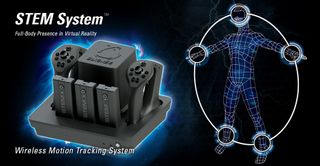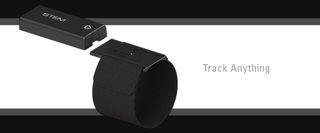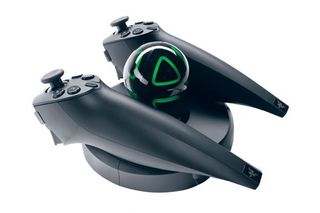Hands-on with the Sixense Stem VR Controller

This may be the best way to control virtual reality
While virtual reality headsets are going through a renaissance period, VR controllers are still stuck in the Wild West. Many companies are trying to find the best ways to allow you to interact in these virtual worlds, but unfortunately, there is no clear great way to do it quite yet. To be fair, coming up with a solution that allows people to reach out into virtual worlds to pick up things with their hands is no easy task, but if anyone’s got a fighting chance at solving the puzzle, it’s Sixense .
If the company’s name sounds familiar, it’s because Sixense teamed up with Razer back in 2011 to develop the Wii remote–like Razer Hydra motion controller . While the device failed to make a big splash when it first launched, once the Oculus Rift development kit units started rolling out, the Razer Hydras quickly flew off shelves. They are now no longer in stock and go for a pretty penny on eBay.
The main issue currently holding back the Hydra is its wires. This isn’t the case with the company’s new STEM controllers, however. Not only is the device wireless, but Stem aims to offer a 1:1 movement experience with just 4.2 milliseconds of latency. And, while the Oculus Rift is intended to be used while sitting, the Sixense Stem is aiming to extend VR to standing experiences. It does this by foregoing DK2’s camera and instead opting for what the company refers to as its Stem pack. The Stem pack looks like a laptop battery that’s anchored on to the backside of the Rift’s headstrap. By doing this, it provides a much greater range of movement and users don’t have to deal with camera line-of-sight issues, which is currently a problem with the DK2.

The Sixense Stem system will support up to five points of contact.
We had a chance to try the Sixense Stem at the company’s Los Gatos location and got to play a variety of demos, the first of which was the company’s awesome lightsaber demo. The Stem System has a docking station for the controllers, and when you pick one up, you also pick up a virtual lightsaber within the demo. Flicking the light saber to turn it on felt incredibly immersive. Simply put, waving the lightsaber about just felt right. Toward the end of the demo, we got to deflect lasers from a droid and felt like Luke Skywalker on Tatooine.
The second demo we tried out took us to a shooting range. Shooting with the virtual gun felt accurate, and you could even use the in-game sights on top of the pistol to aim. It reminded us of the first time we played Wii bowling, albeit in a much more violent fashion.
PC Gamer Newsletter
Sign up to get the best content of the week, and great gaming deals, as picked by the editors.

Rather than rely on Oculus' camera for positional tracking, Sixense uses it's own Stem pack attachment.
The last demo we tried was one in which we walked around a virtual office using one of the Stem controller’s thumb sticks. Playing it standing up, we experienced some locomotion issues, in that our eyes were telling our brain that we were walking forward, but our body was not. It was definitely dizzying and goes back to the issue that properly nailing down VR controls is a tough problem to solve. Sea-leg issues aside, it felt great swiping books off of book shelves.
The Stem controller will also allow you to 3D print attachments to the top of the controllers, in case you wanted to add a sword or gun attachment. While this may sound silly given the fact that you won’t be able to see them with a VR headset on, Sixense believes it could help with the weight distribution of peripherals and make the experience more believable.
Beyond VR, Sixense also believes the Stem controllers can be used to shape 3D printed objects. The company is creating what it’s billing as a “gamified two-point of control CAD-engine” called Make VR. You’ll be able to use it without the Oculus Rift, the idea being that it will be an easy and intuitive interface that will allow you to create and edit 3D-printable objects.

Remember the Razer Hydra? Sixense collaborated with Razer to develop it.
The device is scheduled to ship "soon." Time will tell if it ends up becoming the VR controller of choice.
Most Popular








